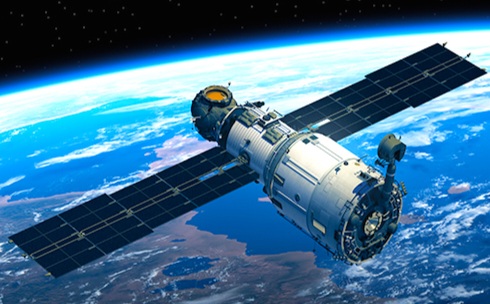The Low Earth Orbit (LEO) Satellite has recently gained prominence as one of the leading satellite technologies.
In today’s digital age, internet access and communication have become crucial. However, many remote areas around the world still face challenges with limited or no connectivity.
One promising solution to enhance connectivity in these remote regions is satellite technology.
In this article, we will explore the benefits of LEO satellite technology in maximizing connectivity for remote areas.
What is a Low Earth Orbit (LEO) Satellite?
A Low Earth Orbit (LEO) Satellite is an artificial satellite that orbits the Earth at relatively low altitudes, typically ranging from 180 to 2,000 kilometers above the Earth’s surface.
LEO satellites differ from geostationary satellites, which orbit at much higher altitudes.
Here are some key characteristics of LEO satellites:
- Low Altitude: LEO satellites orbit at lower altitudes, allowing them to move faster around the Earth compared to geostationary satellites. This results in lower latency for communication.
- High Capacity: Modern LEO satellite technology can generate significantly more data and capacity than previous generations.
- Mobility: Due to their high speed, LEO satellites do not remain stationary in the sky, allowing them to cover larger areas of the Earth.
- Low Latency: LEO satellites are closer to the Earth’s surface, resulting in lower latency, which is crucial for real-time applications such as online gaming and video conferencing.
How Does LEO Satellite Technology Work?
LEO satellite technology operates by orbiting the Earth at low altitudes and transmitting communication signals to and from the Earth’s surface.
The working mechanism involves several key components:
- LEO Satellites: These are the satellites orbiting the Earth at low altitudes, equipped with communication equipment to send and receive signals.
- Ground Stations: Ground stations receive signals from LEO satellites and transmit signals back to the satellites. They serve as intermediaries between the satellite network and terrestrial communication networks.
- User Terminals: User terminals are devices used by end-users to communicate through the satellite. These can include devices like antennas, satellite phones, or modems.
- Network Operations Center (NOC): The NOC manages and monitors the satellite communication network, allocating resources, checking satellite health, and ensuring smooth operations.
The satellite communication process involves signals being sent from user terminals to LEO satellites, then to the ground stations, and finally to the communication destination. Similarly, signals from the destination are transmitted via ground stations to the satellite and then to the user terminal.
What Role Does LEO Satellite Technology Play in Enhancing Connectivity in Remote Areas?
LEO satellite technology plays a crucial role in improving connectivity in remote regions in the following ways:
- Internet Access in Remote Areas via LEO Satellites: One of the primary applications of LEO satellite technology is providing internet access in regions that are difficult to reach with terrestrial infrastructure. Residents in remote areas can access the global internet network via LEO satellites using simple user terminal devices. This enables access to information, educational resources, and business opportunities that were previously unavailable.
- Telemedicine: Telemedicine is a critical application of satellite technology in remote areas. It allows remote communication between doctors, nurses, and patients, enabling the provision of healthcare services even in isolated regions.
- Emergency Communication: One of the challenges in remote areas is emergency communication access. LEO satellite technology can provide the necessary communication infrastructure during crises or natural disasters. It can enable effective communication for rescue operations and humanitarian assistance.
- Distance Education: Satellite internet access can enable distance education in remote areas. Students and adult learners in these areas can access online learning resources and courses that were previously inaccessible.
- Transport Connectivity: Transportation systems in remote areas also benefit from LEO satellite technology. It can be used for fleet tracking and management, communication during travel, and providing navigation services.
- Environmental Monitoring: Remote areas often feature sensitive natural environments. LEO satellites can be used for environmental monitoring, tracking climate and weather changes, or even monitoring deforestation rates.
Challenges in Implementing LEO Satellite Technology
While LEO satellites play a significant role in enhancing connectivity, there are several challenges that need to be addressed in their implementation:
- Cost: The investment required for launching, building, and operating LEO satellites is substantial. A key challenge for making these services affordable in remote areas is reducing costs.
- Licensing and Permissions: Licensing and permits from regulatory authorities are required for the development of satellite infrastructure, which can be a lengthy process.
- Terminal Compatibility: Affordable and compatible user terminals are crucial for ensuring wide access to LEO satellite services in remote areas.
- Upgrades and Maintenance: Technical capacity and resources are necessary for the maintenance and upgrades of LEO satellites to ensure their continued effectiveness.
- Space Environment: The increasing number of LEO satellites may pose challenges to the space environment in the coming years, such as the risk of space debris and satellite collisions.
Conclusion
Low Earth Orbit (LEO) satellites have become an innovative solution for improving connectivity in remote regions. They have unlocked access to the internet, telemedicine, emergency communication, distance education, and other essential services in areas previously underserved by terrestrial infrastructure.
While there are still challenges to address, such as cost, licensing, and maintenance, the advancement of LEO satellite technology — exemplified by projects like SpaceX’s Starlink — demonstrates the vast potential of this technology in connecting the world and playing a significant role in remote areas.
With continued technological development, LEO satellites are expected to increase connectivity and offer more opportunities for remote regions to engage with an increasingly connected world.
If you are interested in the best internet services from PT Lintas Jaringan Nusantara, you can visit lintas.net.id for more information.




